Do you love Bonsai Plants? Want to showcase them in your home or garden? Here are some Best Trees For Bonsai that you can use!
If you love trees but don’t have ample space to grow them, you can train them to grow short. How? By making them Bonsai Plants! Check out the Best Trees For Bonsai and pick the one you like the most!
Find out some stunning indoor bonsai pictures here
Best Trees For Bonsai
1. Japanese Maple
Botanical Name: Acer palmatum
Japanese Maple looks excellent with colorful leaves. Also, there are countless varieties, and the bonsai tree can be formed in various styles.
Position: It prefers a sunny, airy position. The plant is frost hardy even when trained as a bonsai, but it should be protected from intense frost (below -10° C / 14° F).
Learn about growing Japanese Maple in a pot here
2. Bodhi Tree
Botanical Name: Ficus religiosa
The bodhi is a tough plant that grows fast and forms aerial roots. It has attractive shiny heart-shaped foliage that appears in bronze-green color. This is one of the Best Trees For Bonsai.
Position: It is a tropical tree that loves the sun and heat. Place it in a position that receives at least 6 hours of sunlight daily (the more, the better).
3. Rockspray Cotoneaster
Botanical Name: Cotoneaster horizontalis
It is a deciduous shrub that is one of the best bonsai plants because of its forgiving nature. The plant looks beautiful with its red-maroon leaves.
Position: It can be grown in full sun or part shade, but flowers are best in full sun positions. Protection from frost is required if long cold spells are expected.
4. Baobab
Botanical Name: Adansonia
Tall, gigantic, and fabled African tree, the great baobab is truly adaptable to become on of the Best Trees For Bonsai.
Position: If you live in a warm climate, just keep it in the sun. However, if you live in a temperate zone, place the pot indoors in winter.
Get the best Baobab care tips here
5. Common Beech
Botanical Name: Fagus sylvatica
This tall, stately tree becomes a large to medium-sized bonsai specimen. Keep in mind that the beech tree is a slow grower and takes time to develop fully. This is one of the Best Trees For Bonsai.
Position: Keep your beech tree bonsai in semi-shade to full sun position, providing a space that is sheltered from the intense afternoon sun, especially in summer.
6. Boxwood
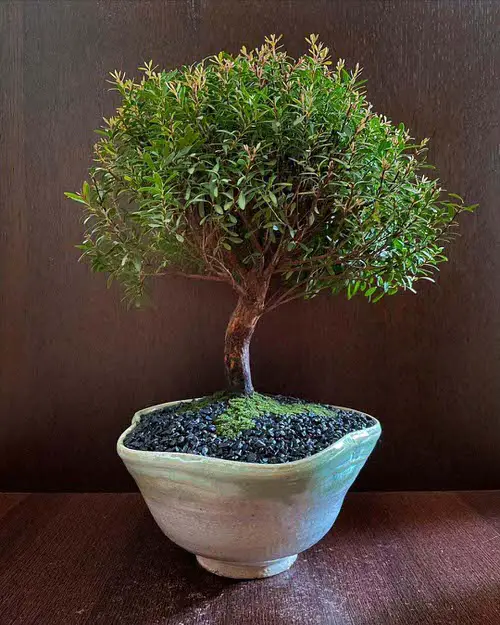
Botanical Name: Buxus
Not only for hedging, but boxwood can also become a bonsai. Super adaptable to containers, any species of this genus is easy to care for and maintain.
Position: The boxwood is an outdoor plant that is tough and resilient and withstands the sun as well as shade. Protect the plant in winter.
7. Pomegranate
Botanical Name: Punica granatum
Pomegranate is one of the most excellent fruit trees and the easiest one to count among the Best Bonsai Plants. Because it has a shallow root system and adapts well to bonsai culture. This is one of the Best Trees For Bonsai.
Position: It should be kept outside in the full sun for the whole year except when the temperature drops below 41 F (5 C). Keep the tree indoors, in a sunny position.
Learn how to grow Pomegranate in a pot here
8. Juniper
Botanical Name: Juniperus
Junipers are one of the most popular trees for bonsai. “Juniper Procumbens Nana” is very popular among beginners who are just starting out to make a bonsai tree.
Position: It is best to place them in a sunny spot with shade from the afternoon sun. Protect the tree once the temperature drops below 14 F in winter.
9. Ficus Retusa
Botanical Name: Ficus Retusa
It is probably one of the most attractive trees among tropical bonsai growers and is regarded as one of the Best Trees For Bonsai. Easy to style, resistant to negligence, and probably the best plant for beginners.
Position: If growing in a warm climate, keep it in partial sun. You can also keep it indoors, especially in a cool temperate climate, in a well-lit position but out of direct sunlight.
10. Ficus benjamina
Botanical Name: Ficus benjamina
Benjamin Ficus is one more popular plant you should consider. It is a beautiful evergreen tree that makes a wide canopy of fine branches and looks great as bonsai.
Position: It can be grown either outdoors or indoors on a windowsill that gets bright light.
Find out how to grow Ficus benjamina indoors here
11. Jade
Botanical Name: Crassula ovata
Jade Tree is a succulent plant with thick fleshy stems and leaves. It is an easy-care evergreen bonsai. The thick trunk gives it a mature look quickly. This is one of the Best Trees For Bonsai.
Position: Jade tree can be grown indoors, although it enjoys sunny positions and high temperatures. Keep temperatures above 41 F (5 C) all the time.
Grow Jade plant into a tree like this
12. Crape Myrtle
Botanical Name: Lagerstroemia
Cherished as one of the Best Bonsai Plants, the Crape myrtle has exquisite branch formation and showy pink, white, or purple flowers. It is easy to train and maintain as bonsai too!
Position: Crepe Myrtle enjoys the bright sun for the formation of flowers. However, it can be kept indoors on a sunny windowsill.
13. Fukien Tea
Botanical Name: Carmona retusa
One of the Best Bonsai Plants, the Fukien Tea is a great addition to any bonsai collection that makes great small indoor bonsai. Its small dark-green shiny leaves have tiny white dots on them.
Position: Fukien Tea is an indoor bonsai but can be kept outside all year round in warm climates. It needs a bright sunny position in the house.
14. Chinese Elm
Botanical Name: Ulmus parvifolia
One of the most splendid elms, this East Asian native becomes a spectacular bonsai easily. This ideal plant is forgiving and doesn’t mind regular pruning and styling.
Position: Keep the plant in a spot that receives direct sun in the morning.
15. Bougainvillea
Botanical Name: Bougainvillea
Bougainvillea has beautiful papery flowers of many colors making an attractive display, and appears incessantly, especially in favorable climates.
Position: Place it in a spot that receives at least 5-6 hours of sunlight. Protect it from freezing temperatures.
Get the best Bougainvillea care tips here
16. Dwarf Schefflera
Botanical Name: Schefflera arboricola
Dwarf Schefflera is easy to grow, drought-resistant, and difficult to kill, making it a perfect bonsai plant for beginners. It is easy to train too.
Position: Place your dwarf Schefflera bonsai in bright, indirect light and protect it from direct sun. It can also survive in low light conditions.
17. Indian Banyan
Botanical Name: Ficus benghalensis
Banyan tree, which is also called “Bargad/Bar” in the local language, is the national tree of India, worthy of being one of the Best Trees For Bonsai. The tree naturally looks old and becomes an amazing bonsai specimen.
Position: The tree requires a warm, humid climate to thrive. If you live in a cool climate, you can try to grow it with care in winter. Place the plant in a spot that receives sun all day long.
Learn the best bonsai care tips here
18. Adenium
Botanical Name: Adenium obesum
The thick bulbous trunk, vibrant blooms, and glossy foliage make the Adenium an ideal tree for bonsai. This flowering tree creates fast and natural-looking bonsai with minimal effort. This is one of the Best Trees For Bonsai.
Position: It needs a sunny position sheltered from the wind. If growing in a non-tropical climate, bring the tree inside and maintain the temperature around 50 degrees F.
Learn some helpful Adenium care tips here
19. Olive
Botanical Name: Olea europaea
Olive bonsai is robust and easy to care for, so it is suitable for use as bonsai. Their smooth trunk and good branch structure make them one of the Best Bonsai Plants.
Position: Hardy in zone 9, an olive tree can be successfully grown as an indoor plant, but it is best to keep it outdoors in full sun.
20. Azalea
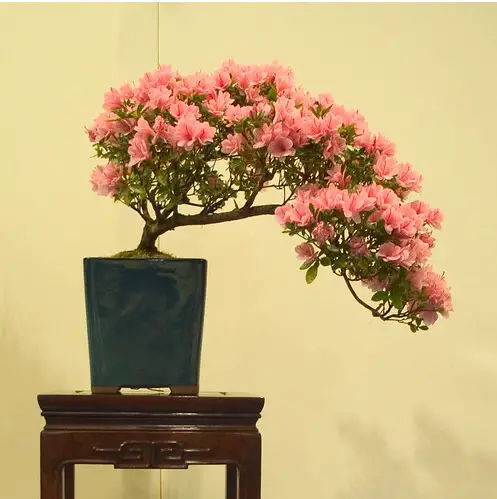
Botanical Name: Rhododendron
Azalea is a must-have Bonsai and looks unbelievably stunning. It is popular for its growth habit and bountiful blooms that come in many different colors, shapes, sizes, and patterns.
Position: Azalea needs a sunny spot with afternoon shade to produce beautiful blooms.
21. Guava
Botanical Name: Psidium guajava
Not very popular, but the guava tree becomes an excellent bonsai and doesn’t require too much care or maintenance. It is one of the Best Bonsai Plants since making it produce fruits is possible.
Position: The guava is a tropical plant, and therefore, it should be placed outdoors in a sunny location. If you live in a temperate region, keep your guava bonsai indoors in winter.
Want to make a Guava tree into a bonsai? Click here
22. Pine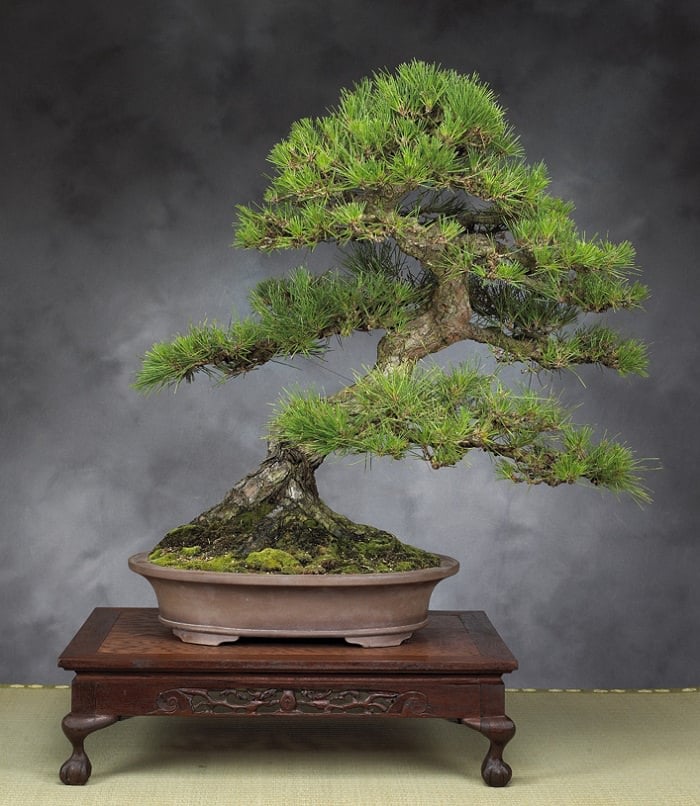
Botanical Name: Pinus
Pines make a wonderful bonsai and are considered one of the Best Bonsai Plants. However, they are not ideal for beginners. Pines are a classic bonsai species, and their rugged, rough bark and trunk make them appear old.
Position: Place the pine outdoors in full sun, where it will get good air circulation.
23. Banksia
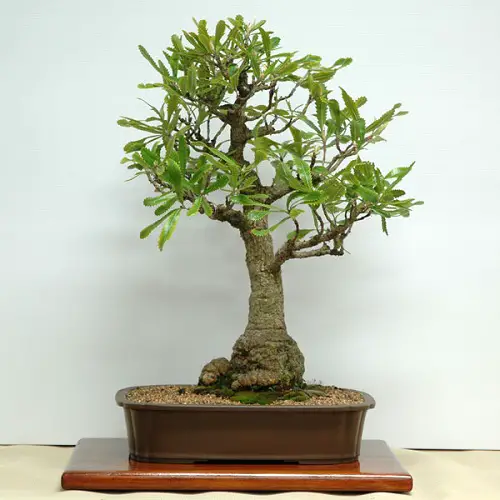
Botanical Name: Banksia
Banksia is another beautiful bonsai that is not deformed or delicate. Also, every time you crinkle its leaves, the tree exudes a sweet, citrus fragrance. This is one of the Best Trees For Bonsai.
Position: You should place this plant outdoors in full sunlight as it needs direct sunlight for 6-8 hours every day.
24. Cherry Blossom
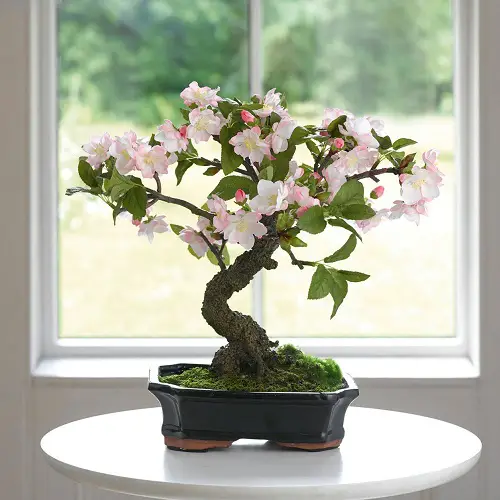
Botanical Name: Prunus serrulata
Cherry Blossom bonsai produces pretty flowers in early spring that drops to the ground and make for a lovely backdrop of pink. It is one of the best Best Bonsai Plants you can grow!
Position: Cherry tree bonsai loves partial sunlight as full sunlight may burn the delicate leaves and flowers. Place the tree in a spot that receives morning sunlight.
25. Chinese Banyan
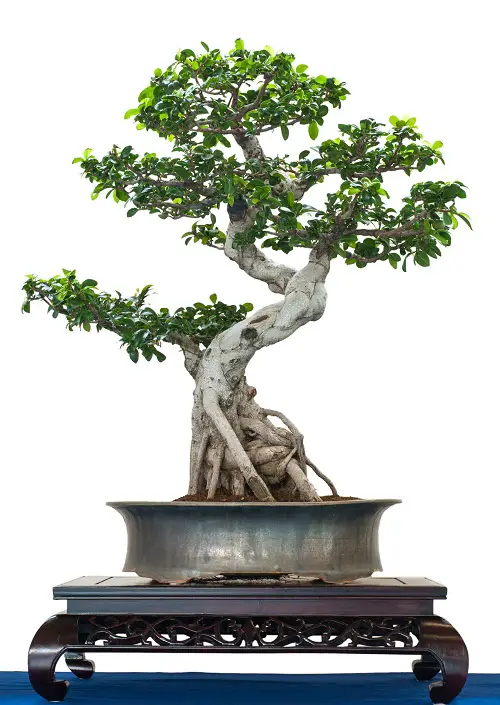
Botanical Name: Ficus malacocarpa
The Chinese Banyan is a unique cross between Ficus Microcarpa ‘Crassifolia’ and Ficus Microcarpa ‘Retusa.’ It is one of the best options for bonsai!
Position: The Chinese Banyan loves the direct, full morning sunlight but partial sunlight in the afternoon. Place it outdoors where it receives shade in the afternoon.
26. Cedar
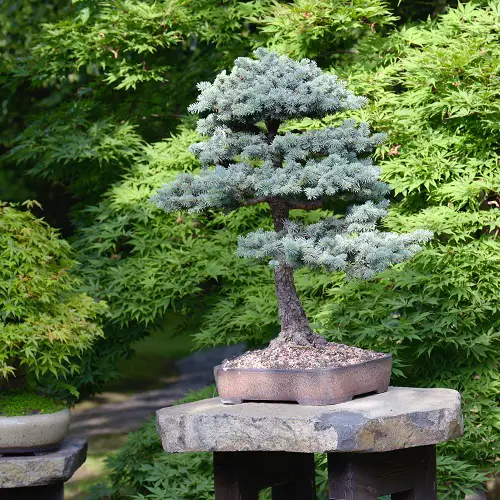
Botanical Name: Cedrus
Cedar trees in their natural habitat can grow up to 40-50 feet tall, but they make attractive bonsai trees, too. With unique evergreen features, the color of the needles varies from silver-blue to bluish-green. It is one of the best Best Bonsai Plants you can grow!
Position: Cedar bonsai tree loves a lot of full sunlight and must be grown outdoors where they receive sunlight for 6-8 hours every day.
27. Brazilian Rain Tree
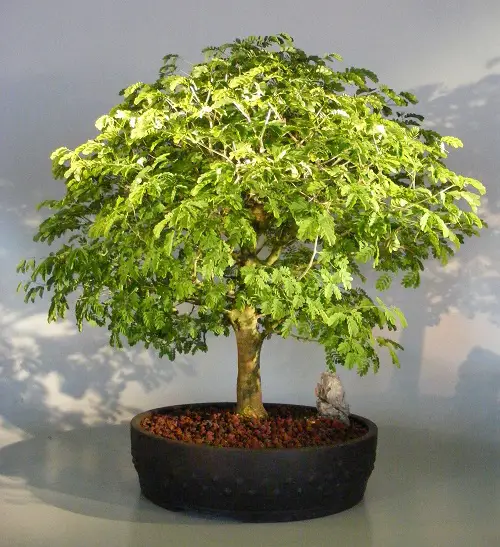
Botanical Name: Chloroleucon tortum
The Brazilian Rain Tree has compound leaves with small green leaflets and delicate branches. It is an extraordinary bonsai to grow as the leaves open up every morning and fold up every evening.
Position: It loves sunlight, and an east, west, or south-facing window can be an ideal spot for this plant.
28. Jacaranda
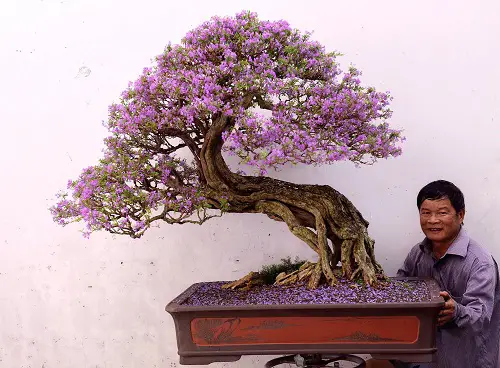
Botanical Name: Jacaranda mimosifolia
Also called Blue Jacaranda and makes for an aesthetically beautiful bonsai. It is famous for its long-lasting and striking violet-colored, bell-shaped blooms.
Position: It needs full sunlight for the best blooms. Find a spot that receives 6-8 hours of direct sunlight every day.
29. Ginseng Ficus
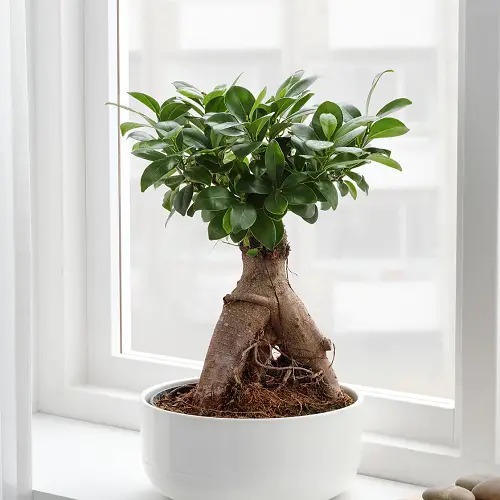
Botanical Name: Ficus retusa
Ginseng Ficus is an easy-to-grow bonsai tree with minimal care requirements as it does not need much sunlight like other bonsai varieties. It is one of the best Best Bonsai Plants you can grow!
Position: It loves to grow indoors like a houseplant as it works best in bright and indirect sunlight.
30. Pachira Bonsai
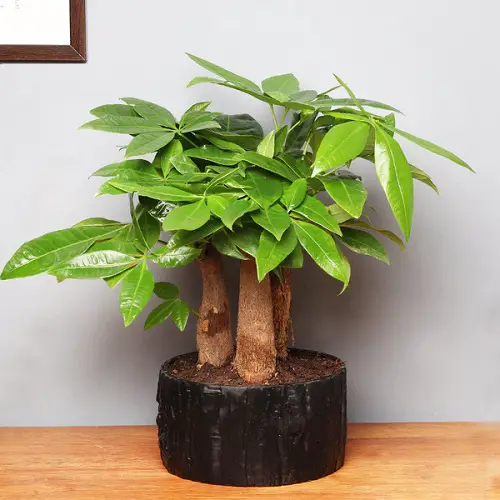
Botanical Name: Pachira Aquatica
Still looking for the Best Bonsai Plant? The Pachira Bonsai, also called Money Tree, is the one with its braided or twisted trunk. It is also considered to be lucky, according to Feng Shui.
Position: Place the Money Tree in a sunny and bright spot where the tree can receive full sunlight for 5-6 hours every day.
31. Dwarf Jade
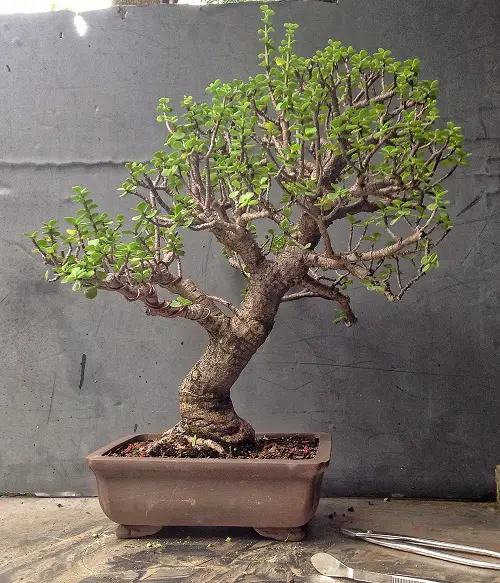
Botanical Name: Portulacaria afra
This softwood evergreen shrub looks great as a bonsai tree. It is a slow grower but makes up for it by being a low-maintenance specimen. This is one of the Best Trees For Bonsai.
Position: It grows well indoors but requires direct sunlight. Dwarf jade cannot withstand freezing temperatures.
Find out the best Jade plant varieties here
32. Birch
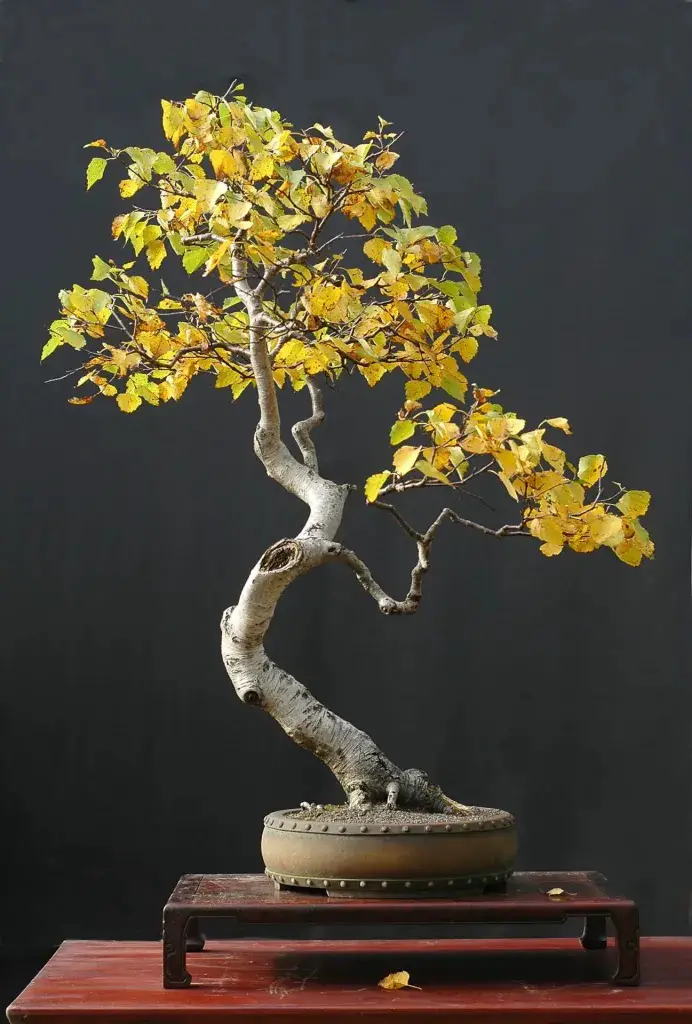
Botanical Name: Betula
Birch Bonsai tree is frost-hardy and that makes it an ideal one for your garden. With an elegant shape and flexible hanging twigs, it makes for a stunning bonsai and is considered by many as a part of the Best Trees for Bonsai.
Position: It loves full and direct sunlight so place it in a spot that receives 6-8 hours of sunlight every day.
33. Bald Cypress
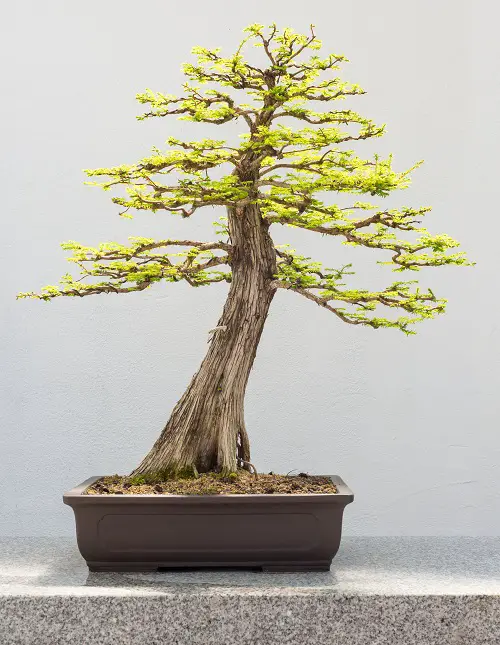
Botanical Name: Taxodium distichum
The Bald Cypress is good for extremely wet climates. This deciduous conifer is among the Best Bonsai Plants and is covered with gray or brown bark with scaly ridges or long fiber-like ridges that usually peel off in strips.
Position: It needs plenty of sunlight and warmth during the growing season.
34. Golden Shower Tree
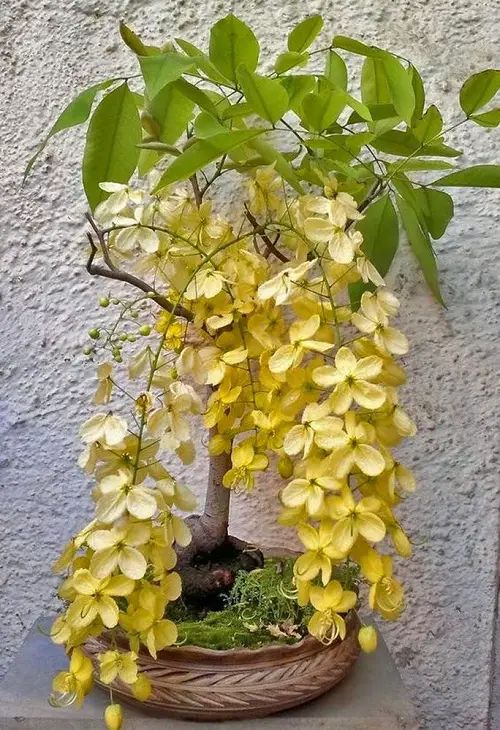
Botanical Name: Cassia fistula
This beautiful tropical tree from South East Asia offers yellow blooms that makes it a very popular bonsai tree. For best growth, use a well-draining growing medium.
Position: Keep this bonsai in bright and indirect sunlight.
35. Flame of the Forest
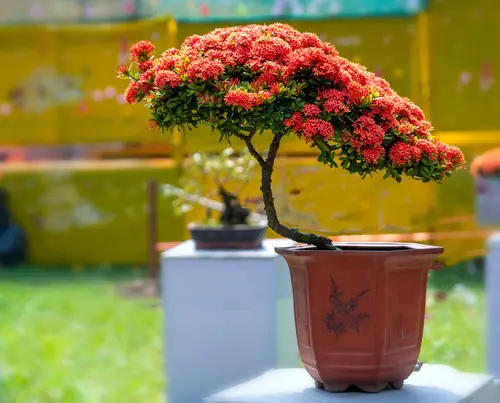
Botanical Name: Delonix Regia
One of the Best Trees For Bonsai and known as Royal Poinciana, Flamboyant tree, or Fire tree, it features large, fiery red or golden blooms that appear from spring through summer.
Position: It prefers direct sunlight. Protect the bonsai tree from cold and wind.
36. Chinese Privet
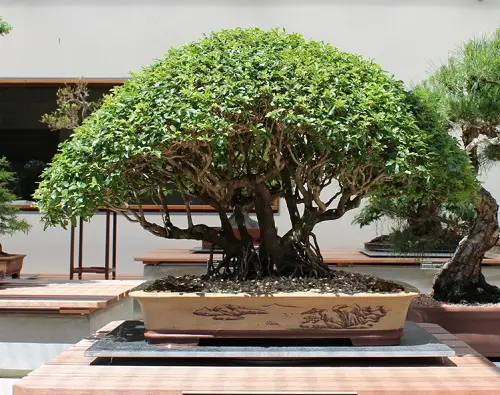
Botanical Name: Ligustrum
These small shrubs or trees can be grown in almost any type of soil, counting them among the Best Trees For Bonsai. It grows quickly with good care and needs plenty of water in summer.
Position: Choose a sunny location in winter. The perfect area will be in front of a window.
37. English Elm
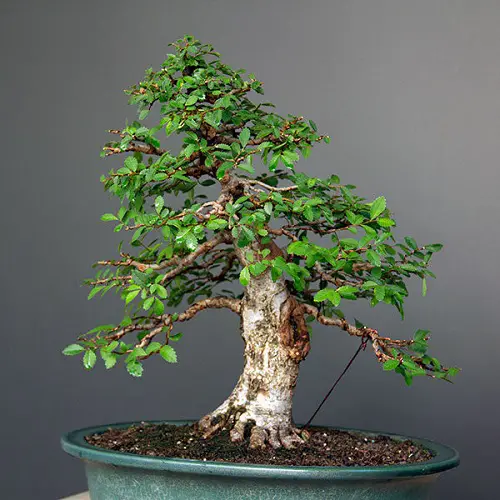
Botanical Name: Ulmus Procera
This bonsai tree has oval pointed leaves and dark grey-brown bark. It can be grown from cuttings and grows fast in the first 2-3 years. This is one of the Best Trees For Bonsai.
Position: Place the plant in full sun in summer and save from frost in winters.
Find the best Elm varieties here
38. Crab Apple
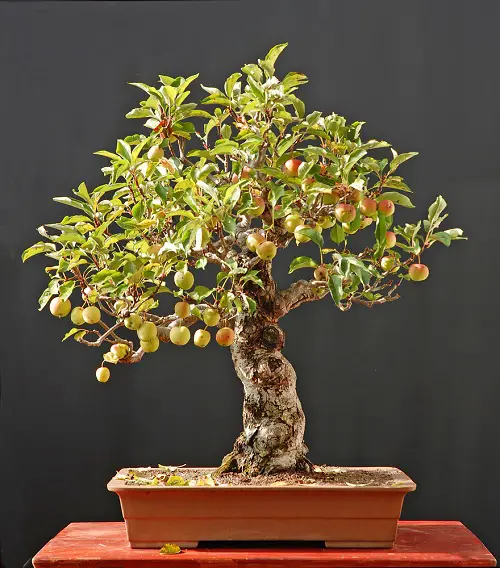
Botanical Name: Malus spectabilis
When it comes to bonsai, crabapples are one of the most beautiful ones and the Best Bonsai Plants! They display white or pink blooms in spring and small fruits in fall.
Position: It prefers sunlight and aeration but also dislikes strong heat so avoid placing it at a location that gets afternoon sun.
Get the best Crab Apple planting instructions here
39. Mulberry
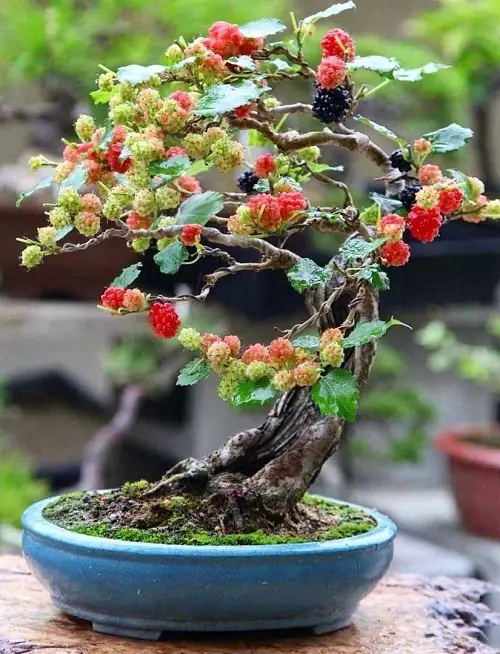
Botanical Name: Morus Nigra
Mulberries are admired for juvenile shoots, and multiple white, green, or pale yellow fruits. Bring it indoors when nighttime temperature lows to 40 degrees mark. This is one of the Best Trees For Bonsai that also fruits!
Position: Keep the bonsai where it gets plenty of bright but indirect light.
Learn about growing Mulberry in containers here
40. Oak
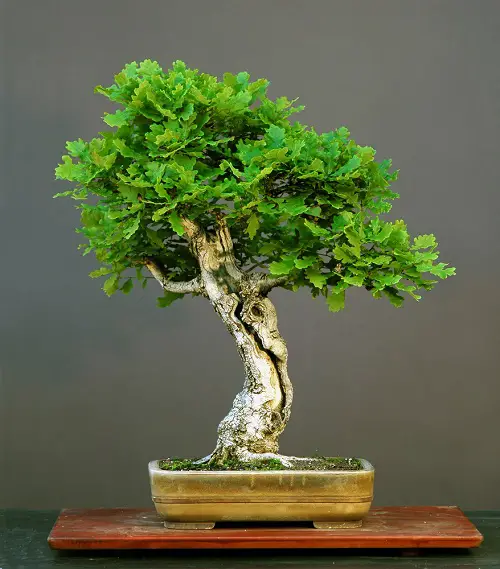
Botanical Name: Quercus
Quercus genus makes for a good-looking bonsai, and oak is the best of them all. They have impressive trunks and rough, heavy-textured bark that looks great with age, bringing them to the top in Best Trees For Bonsai.
Position: Oak bonsai trees require full sun. In areas with hot and dry summers, the filtered afternoon sun is suggested.
Check out the best Oak tree varieties here
41. Firethorn Bonsai
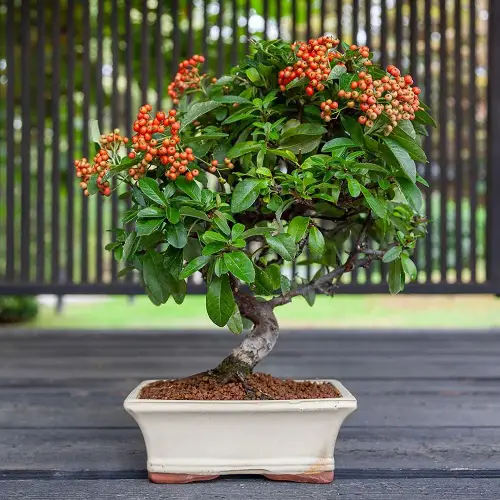
Botanical Name: Pyracantha
The Firethorn is one of the most attractive bonsai with its vibrant evergreen shrubs and red berries. This is one of the Best Trees For Bonsai that anyone can grow.
Position: These thrive in sunlight or partially shaded positions but must be protected from extremely hot sunlight.
42. Goshin Bonsai
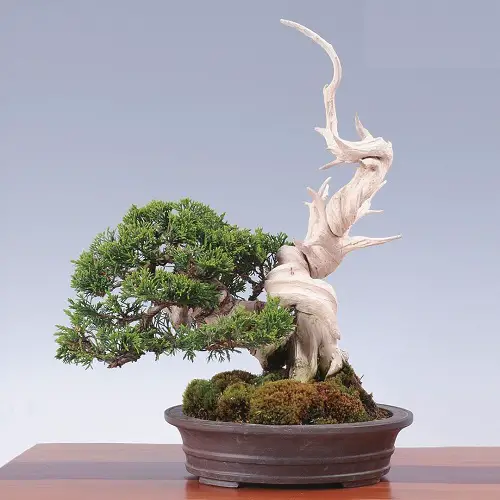
Botanical Name: Juniperus chinensis
The Goshin is a forest-style bonsai where 11 Chinese Junipers are planted to create a forest. The Goshin, also called the Guardian of the Spirit, was first created by John Naka, with each tree representing one of his grandchildren and is considered one of the Best Trees for Bonsai.
Position: It would be best to place the Goshin near a south-facing window so it gets tons of light.
43. Chinese Bird Plum Bonsai
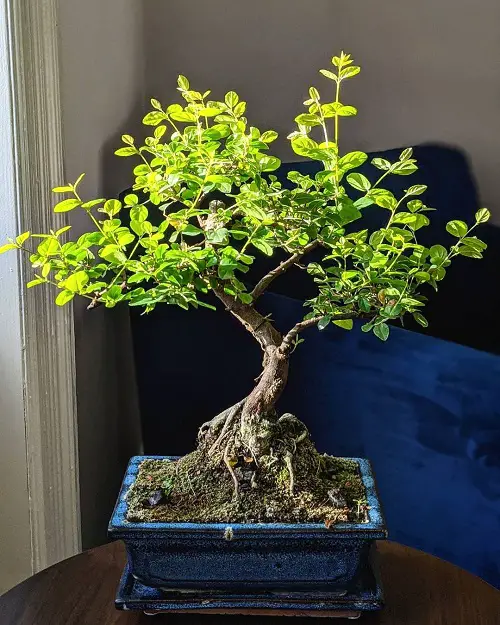
Botanical Name: Sageretia theezans
The Chinese Bird Plum is a subtropical evergreen shrub that is popular in China and Japan as one of the Best Bonsai Plants. These bear small flowers and edible fruits too.
Position: These should be kept near south or west-facing windows as they need semi-shaded areas and need to be protected from intense sunlight.
44. Satsuki Azalea
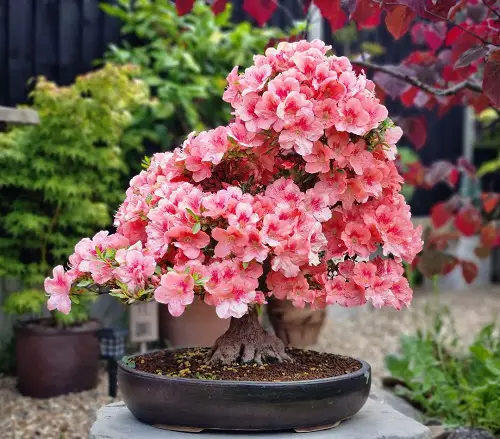
Botanical Name: Rhododendron indicum
An evergreen shrub with dark green leaves, pink-white flowers, and a light bark, the Satsuki Azalea entices everyone with its beauty. It is one of the best Best Bonsai Plants you can grow!
Position: The Satsuki azalea thrives in direct sunlight but needs to be protected from rain and temperatures lower than 40° F (-5° C).
45. Chinese Wisteria Bonsai
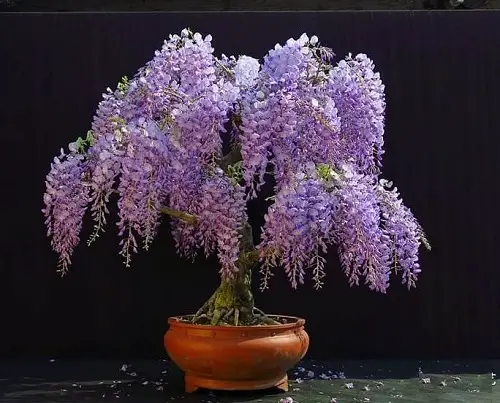
Botanical Name: Wisteria sinensis
The Wisteria Bonsai is a beautiful medium-sized bonsai with an exotic look that grows clustered blooms of white, pink, and purple, making it a forerunner in the Best Trees for Bonsai.
Position: The wisteria bonsai needs bright sunlight and needs to be kept away from winter frost.
46. Star Magnolia Bonsai
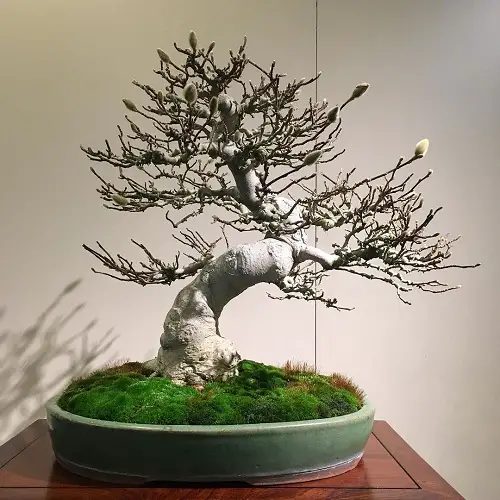
Botanical Name: Magnolia stellata
The Star Magnolia is a stunning bonsai with thin twigs and spectacular white blossoms that emit a strong scent. It is one of the best Best Bonsai Plants you can grow!
Position: Star magnolias bloom in direct sunlight or partial shade.
47. Japanese Apricot
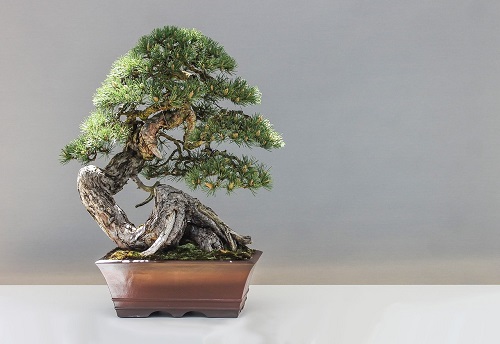
Botanical Name: Prunus mume
Cherished among the Best Bonsai Plants, the Japanese Apricot is a gorgeous tree with a rough bark that bears pink flowers in winter, enhancing any home.
Position: These bask in the full sun and should be kept near bright sunlight. However, the Japanese apricot would do well in a slight shade during midsummer.
48. Apple Bonsai Tree

Botanical Name: Clusia rosea
The Apple Tree Bonsai is a dense apple tree with deep green leaves that bears pink and white flowers in summer that turn into full-sized apples. This is one of the Best Bonsai Plants as it provides both flowers and fruits that you can relish.
Position: It can be grown in a full or semi-shaded area but prefers sunny locations and does well in USDA zone 11 and 12.
49. Bay Leaf Bonsai
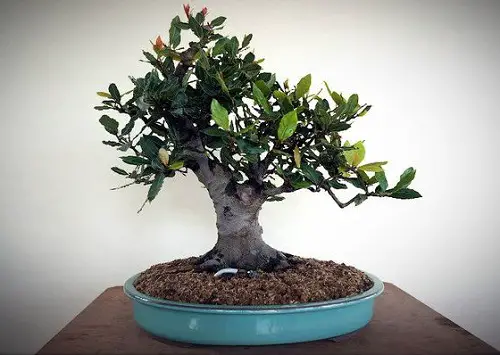
Botanical Name: Laurus nobilis
The Bay Leaf Bonsai has glossy dark green leaves and a shrubby appearance that produces yellow clustered blossoms in spring. It is one of the best Best Bonsai Plants you can grow!
Position: It grows best in USDA Zones 8 – 10 and requires partial shade.
50. Fir Tree Bonsai
Botanical Name: Abies
The Fir Tree Bonsai is one of the Best Trees For Bonsai, with its dense foliage of blue-gray needle-like leaves. Displaying a soft elegance, the Fir Bonsai will resemble a miniature Christmas tree in your home.
Position: The Fir Tree Bonsai should be kept in direct sunlight and can also tolerate partial shade. However, intense heat is not good for abies bonsai, and it should be protected from the midday sun in hot summer.


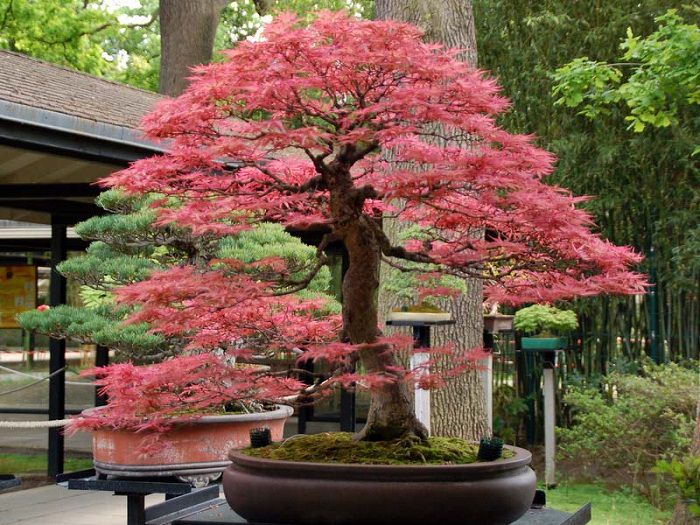
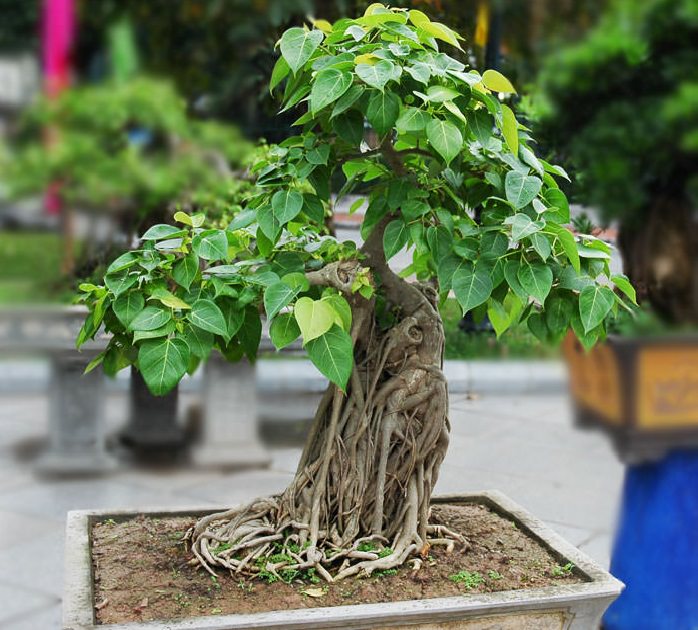
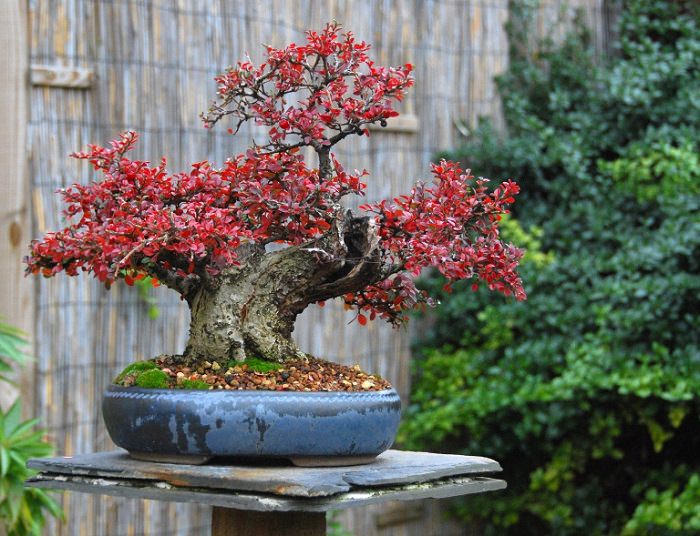
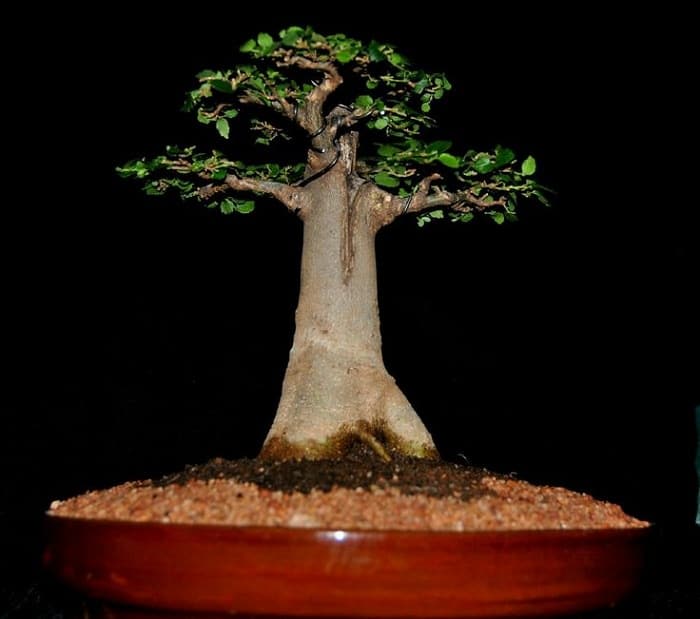
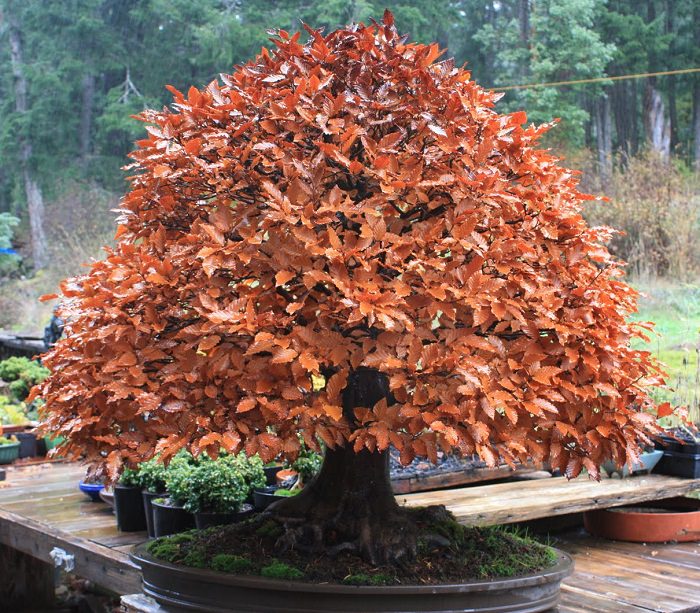
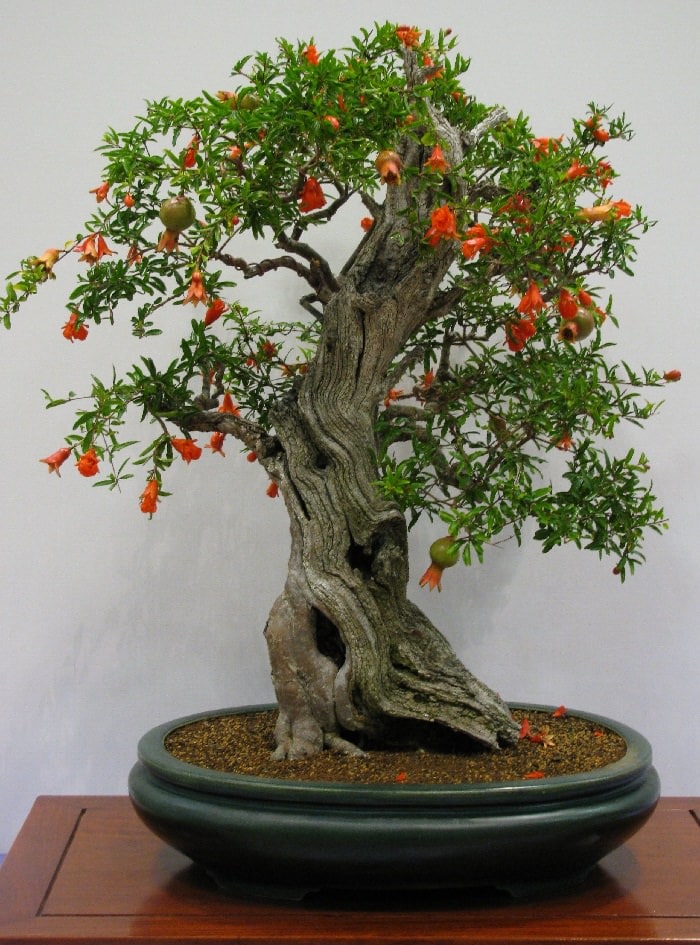

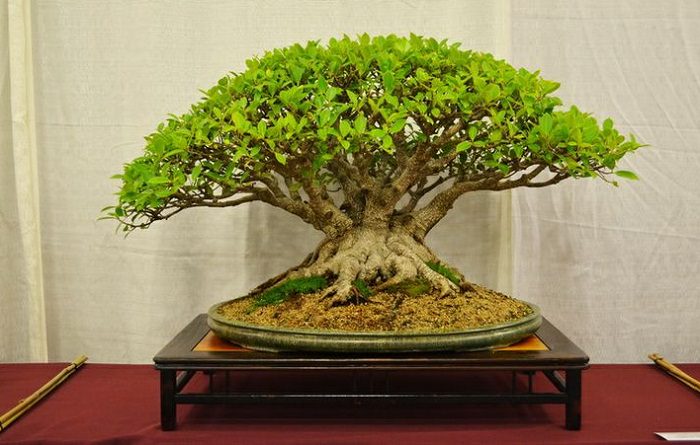
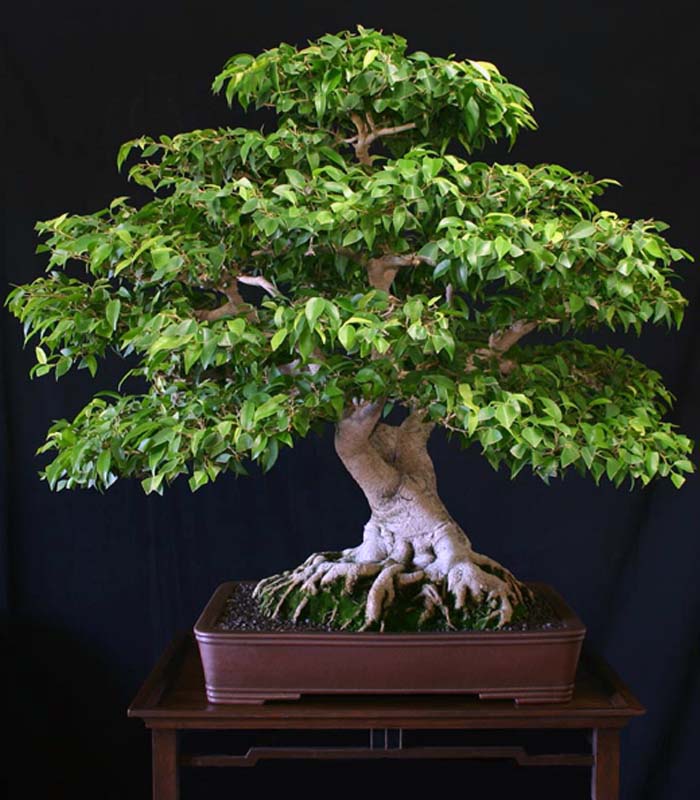
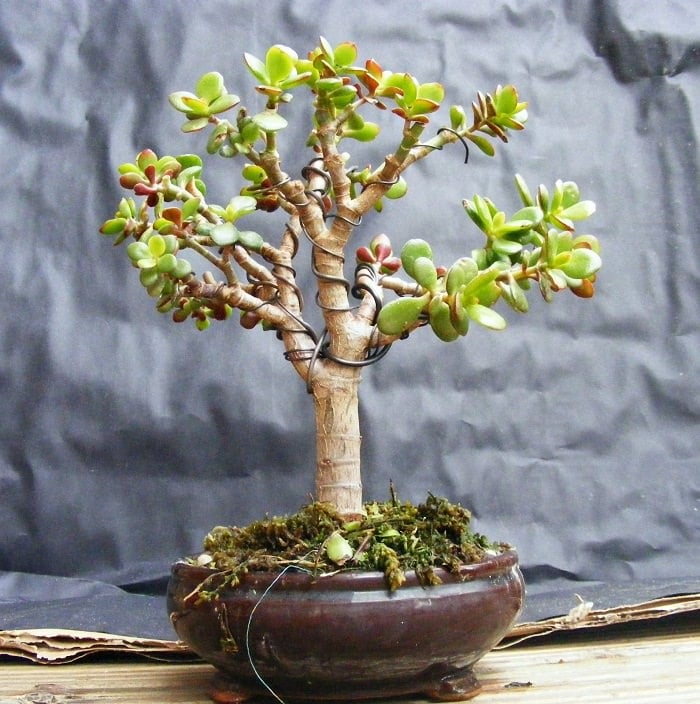
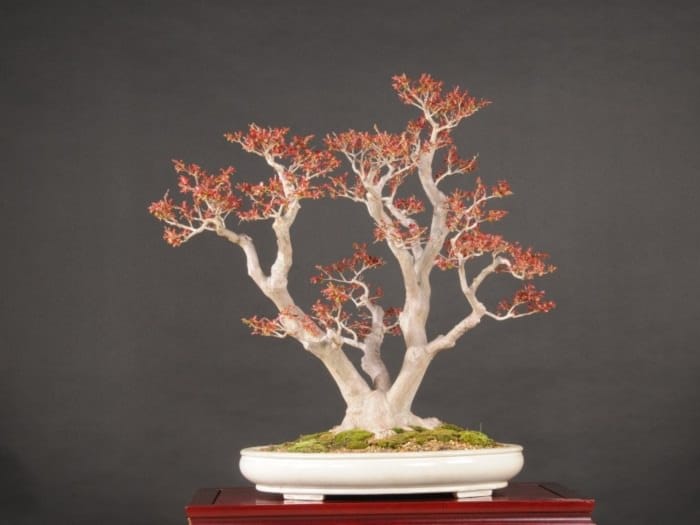
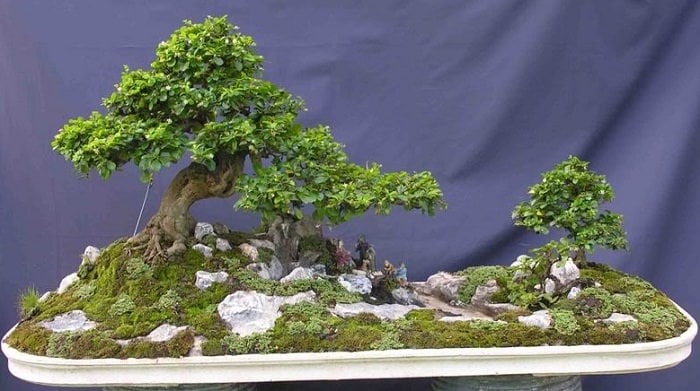
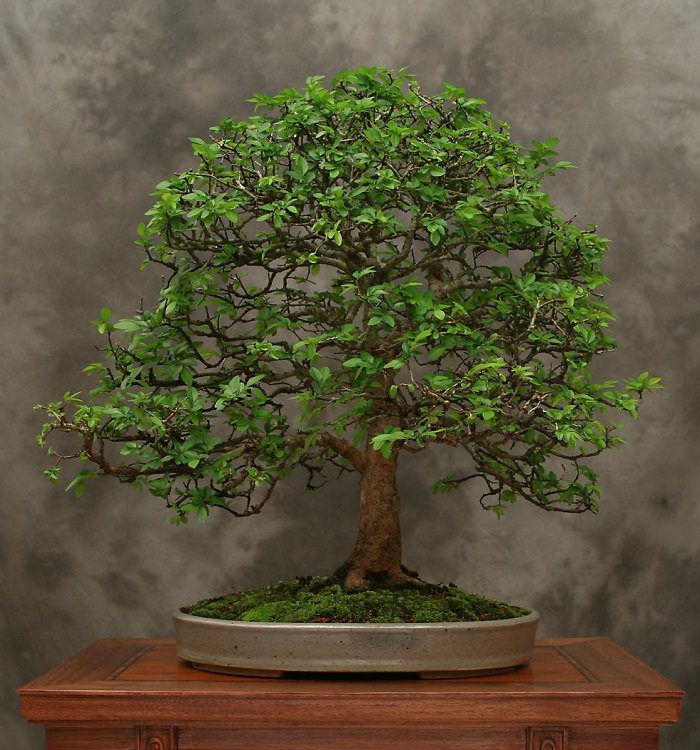

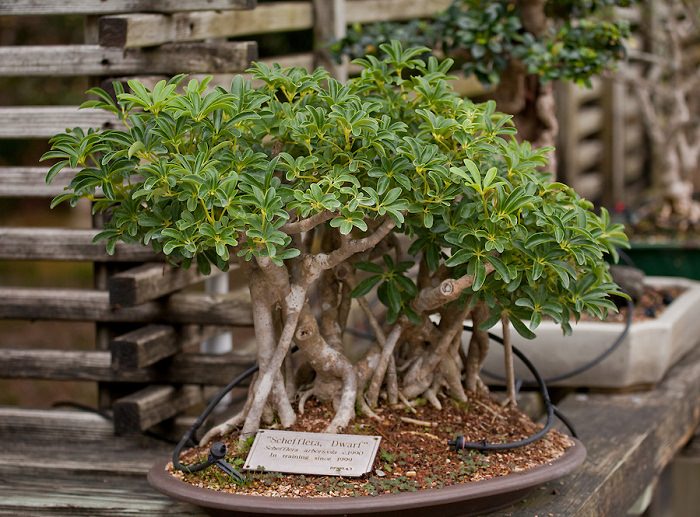
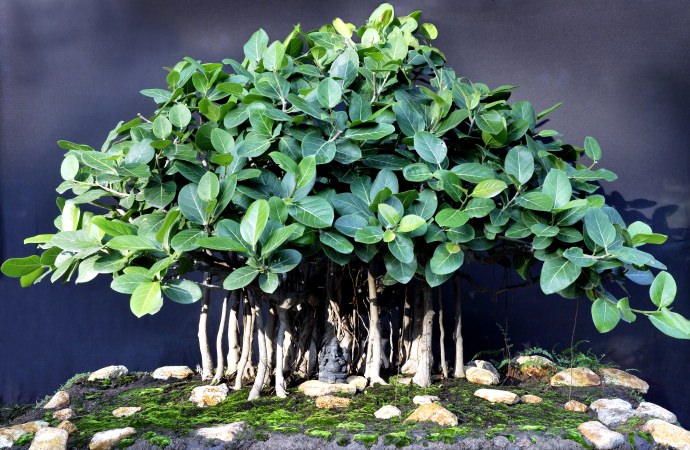
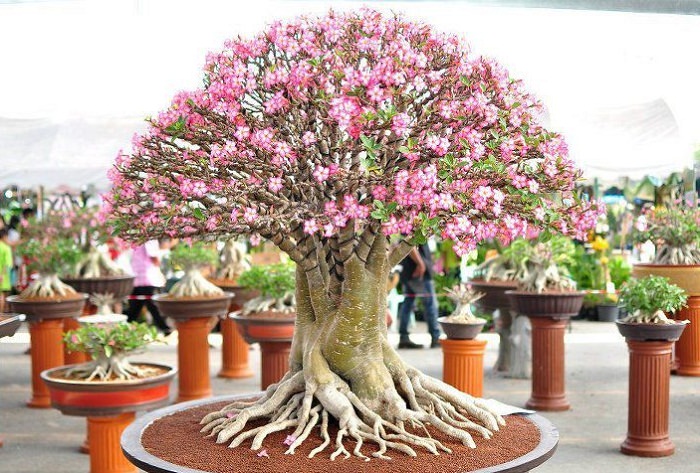
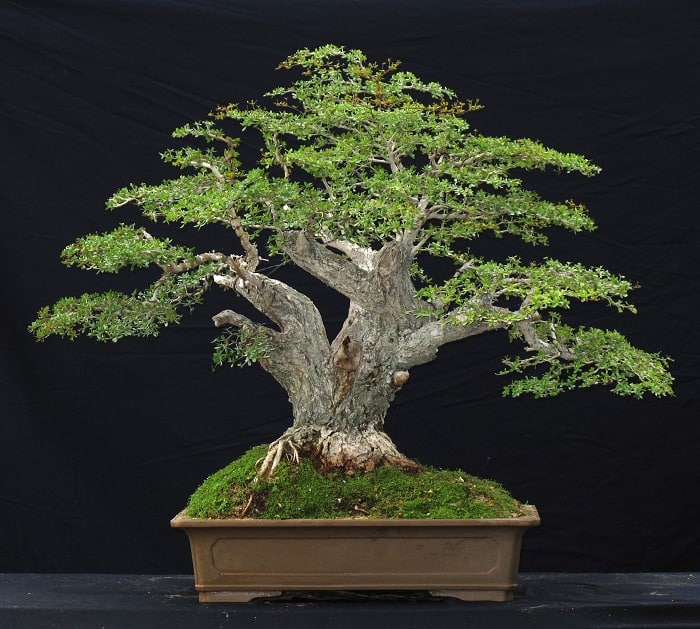
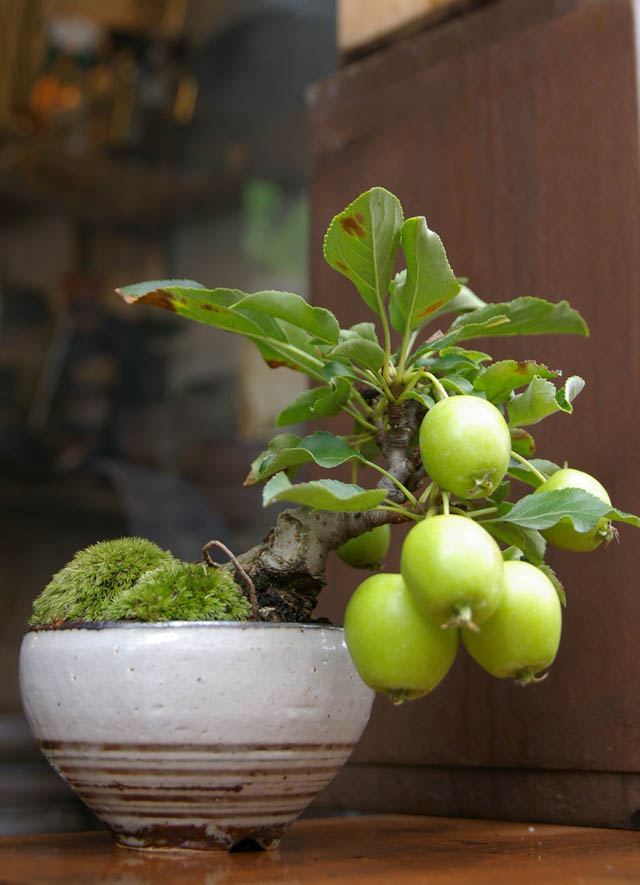

Thank you for such detailed list.
As a beginner to Bonsai, please remember the trees you have just seen have been growing for many years. I takes a while to trim and care for your tree to get the above results. Good luck and Bonsai.
Thanks for yor words.
your a true bonsai master
Really beautiful,ill try bugambillia because will be my first or guava more easy.txs so much
Hi,
Nice article. I just want to ask one question.
Can all these trees be grown in the Indian climate?
Ficus Benjamina,fucus recamosa,guava and maple tree and jade plant bonsai are easily grown in Indian climate.
UN COMENTARIO DE CHILE….ES UN TEMA MARAVILLOSO….SOY AFICIONADO DE ESTE ARTE …FELICITACIONES POR COMPARTIR ESTE HERMOSO TRABAJO.
very beautiful. thanks
I would love to make a bonsa tree can someone tell me have to start and where to get the information
Also just starting bonsai. Ordered books off Amazon, seeds and starter kit, tools, plus one matured bonsai to practice on. Check with florists and plant stores, one of the ones here in WA seems bonsai
YouTube is your best bet for starting bonsai. Also don’t be scared to try something people wouldn’t think you can bonsai. You’d be surprised what makes a beautiful bonsai.
very beautiful. thanks
Thanks
Nice to see!!!
I Have already some good bonsai plant and now planning to set a landscape garden with Bonsai, stones & Mosses. Anyway, this is a very good article.
Vijayan. S Kochi
HI ! ALL TREES ARE VERY NICE .
I cannot agree with your selection. Many of your trees are not much to look at when young as most people will buy them. Most of your selection are aged and worth 1,000 s of pounds. Some I would estimate at £7,000 plus.
When you start Bonsai keeping and growing you want a tree that is inexpensive and easy to keep. Some of your trees were for inside and that is much more difficult. I would suggest : 1 PRIVET 2 ENGLISH ELM 3 HORNBEAM , 4 CRAB APPLE 5 ZELKOVA 6 BLACKTHORN 7 FIRETHORN 8 MULBERRY. 9 OAK 10 JAPANESE QUINCE .
These are easy to grow and shape. They are not expensive and seedlings are available for all these trees.
Thank you! This was very interesting and helpful information. I think articles like this are often misleading by not giving information like you mentioned about how old the plants were, how long those type of results took to achieve, etc. Which can be very frustrating and disappointing for beginners so your comments were very much appreciated.
Amazing!
I don’t know that bonsai have a lot of types.
I have the one bonsai plant. But when I grew it, I took the extra care for it. Reading your article, I am feeling that i would be growing different types of bonsai. but where i live, may be there not the getting kind of bonsai. but i will try for it and making landscaping.
Can we make bonsai of orange jasmine.
Chose something will small leaves or a dwarf variety. Here on the west coast of Canada trees such as eastern larch, junipers or hawthorns from more temperate regions like Ontario are extremely hardy. But you still have to look after your nice pots in a frost. The dwarf pomegranate is an excellent choice for indoor bonsai/penjing with nice flowers for a month in summer and fruits that last until spring. Snow bell tree is another. Mossy forests are like whole universes. For an indoor one try taxodium micronatum (motezuma bald cypress) it doesn’t go bald if brought inside in winter.
BONSAI is just beautiful! I’m determined to do well in it! Where may I start off?
Bonsai trees are beautiful innovation. I really enjoyed your post. Thanks for providing a great list of Bonsai Tree. Recently, I bought the Bonsai Tree from The Uniquely to make my garden more attractive.
hey can i get these pictures please
Good article, thanks for the info. Great breakdown on a variety of trees.
Btw, it’s root over rock, not rock over root. It’s backwards several times.
Have not seen some of these before. I like looking at but I have not tried to grow one yet. What couple of options could you suggest for a complete novice and in the south east of England, please?
Look up Heron’s Bonsai on YT. Peter Chan is the Owner/Artist. He is also in the south of England. Does Wesley Garden sound familiar? He has trees there year round.
Hope that helps, if you still need it.
Which one would be best in southeastern Florida? Which are easy to start from seeds that grow quickly?
I apologize for interfering … I have a similar situation. Let’s discuss. Write here or in PM.
hello, i am growing bonsai trees and wondering how long it will take.
The Bonsai Outlet is a great option for those starting out on their bonsai journey for the first time. Here you ll find a hand-picked collection of trees starting at under $50 that are perfect to practice your skills on. Also, there’s a range of DIY and Gift Sets that include all the essential tools and accessories to get going.
I think it’s good to suggest species that work well as bonsai, altho any list will be subject to differences of opinion. My principal problem is that you didn’t provide any suggestion of where these varieties will grow-
I live in south Florida, and trees like Boxwood won’t make it in our heat. Please include the USDA ranges for
the species.